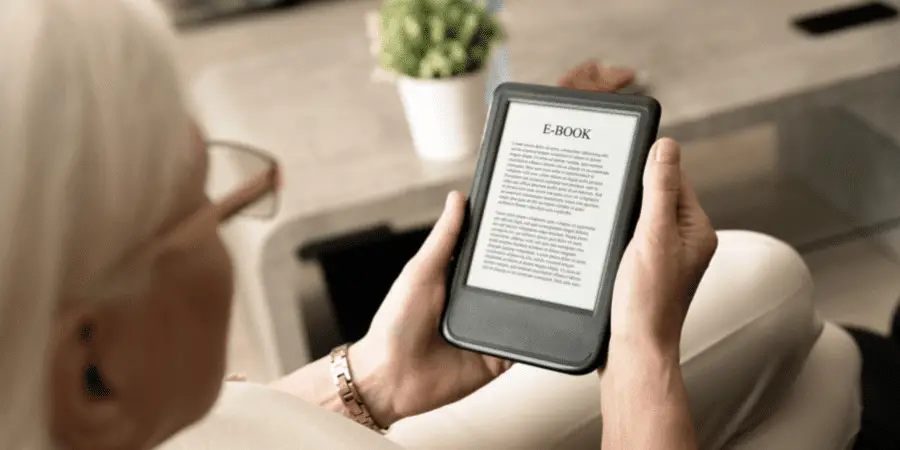If you are someone who likes to read PDFs and such, and is looking for options to buy a new phone, then going for an AMOLED screen could be problematic. The reasons will be explored in great detail.
Over the years, smartphones have largely replaced almost everything and we have seen an increased shift in behavior towards printed books. People do not want to carry heavy books along with them everywhere when they could have an easier alternative that is already in their pockets.
The purpose of technology is to provide comfort and thus getting PDFs of your favorite books if you are a habitual reader or of your text books if you are student seems very logical. But the question that begs here attention is that is AMOLED screen good for reading?
Almost every good phone now has shifted from the IPS display to AMOLED because it consumes less power and has amazing colors and infinite contrast ratio.
But on different discussion forums, we have seen people complaining that they faced issues like eye strain and fatigue when they used their new AMOLED screen phones.
Problems that could be caused Looking at Screens
First let’s look a list of problems that could be encountered when using phones for a very long time. Although we know that even studying from printed books for too long causes us problems because of the fact that our eyes like any other body part would tire down if used excessively.
However, our discussion here will remain directed towards problems reported by continuous usage of AMOLED screens only. The following are some of the most often reported issues.
- Eye Strain and Fatigue
- Headache
- Migraine
- Sleeplessness
Are these problems a concern for readers?

Obviously yes, all of these problems are of great concern to the readers because normally when reading a book, one is really focused and does not look away for extended periods of time.
When reading something on an AMOLED screen phone, our behavior is not expected to change. Thus, the chances of facing problems like these keep on increasing and thus, you being a reader has to factor in these problems.
Although, not every single AMOLED screen user faces this issue, but those who do, they should think hard before making a new AMOLED screen phone purchase.
Why is this problem caused?
AMOLED screens, like OLED use the phenomenon of self illuminating for the reason that each pixel in an AMOLED screen is responsible for creating its own light and its own color. To control the dimming feature, PWM technology has been used. PWM stands for Pulse Width Modulation.
The problem caused by using PWM technology in AMOLED screen is that when brightness is lowered beyond a certain point in some phones, the flickering is very pronounced.
Although flickering also occurs at high brightness levels, it does not cause much of a problem. This flickering effect pronounced at decreased brightness levels is the main cause of our eyes getting fatigued and triggering of headaches or migraines in some people.
Because of the fact that many of the readers use such brightness levels while reading that the screen itself does not look like a light source if looking away, problems with readers who have opted for AMOLED have been reported among many individuals.
Thus, what is our verdict?
The sensible verdict and decision that we have come to is that since readers have to stare at screens for so long, this flickering could strain their eyes and cause a lot of problems.
Even though not everyone would be affected, still you could be one of the affected and thus why take the risk?
What if you still want to purchase an AMOLED?

If you are still hell bent on purchasing a phone with an AMOLED screen, then you must be an advocate of the low battery consumption and really good colors and contrast features of the AMOLED.
Blacks and perfect blacks here and whites are perfect whites. Whatever maybe the driving force behind your decision, you have to look for some ways to make this work.
The most common of these ways is to install third party applications that would remove or reduce this flickering to such an extent that it would not cause so much issues.
Applications like PWM free or OLED saver or Activity Launcher can be found on Google Play Store. Activity Launcher has an anti flicker mode while PWM free and OLED saver work a bit differently.
PWM free and OLED saver apps work by taking control of the brightness control and it uses this exclusive control to change brightness in such a way that flickering has been reduced.
Bottom Line
Nothing comes close to the scent of ink on books. However, digitalization of almost everything else in this world has also affected this book reading activity where much of it has shifted to e-Reading.
AMOLED screens being the most common these days are probably what you are going to encounter in your device and thus problems like eye fatigue and headache could occur.
To get rid of these problems one could try the free applications and thus your problem could be solved. Or you could just be among those lucky people to whom problems like screen flickering would not just affect at all.
Related Articles:
Are LG LED TVs good for gaming?(Read This!)
Is OLED or LCD Better for Gaming?:(Fully Explained)

